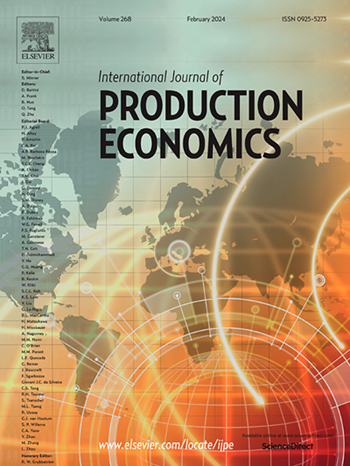Advancing towards industry 4.0: A maturity model for smart shop floor control
IF 9.8
1区 工程技术
Q1 ENGINEERING, INDUSTRIAL
引用次数: 0
Abstract
This research introduces the smart Shop Floor Control Maturity Model (S2FC MM), a comprehensive framework designed to assess the maturity of shop floor control function in the context of Industry 4.0 environments. Developed through a meticulous Design Science Research approach, the model combines mixed methods such as literature surveys, expert interviews, focus groups, an observational case study, and fuzzy expert system modeling. S2FC MM is designed from a socio-technical systems theory (STS) lens. Additionally, it was applied to measure the maturity of a multinational steel manufacturing company dealing with an Industry 4.0 project in the past three years. S2FC MM is distinguished by its granular, multi-layer structure, comprising five maturity focus areas, twenty implementation key factors, ninety-six smart capabilities, and five progressive maturity levels. A key feature of the model is its fuzzy rule-based self-assessment tool, which accurately reflects managerial perceptions of maturity levels, addressing the imprecision often found in such evaluations. Applying our S2FC MM in a large steel manufacturing company has showcased its effectiveness. It has significantly aided shop floor managers and steel company professionals in identifying key operational improvements and systematically navigating the progression of maturity levels within their operations. Consequently, the S2FC MM emerges as a valuable tool for facilitating the transition of the shop floor control function towards smart, technology-driven operations, providing a clear pathway for manufacturing companies to maximize value-creation and enhance performance in the Industry 4.0 era. Theoretically, our research extends the socio-technical systems theory to smart shop floor control by integrating technological and social dimensions essential for Industry 4.0. The proposed S2FC MM framework defines five focus areas that balance human and technical elements. By tailoring socio-technical systems theory principles to manufacturing-specific challenges, the study provides a socio-technical perspective for managing digital transformation in production environments.
迈向工业4.0:智能车间控制的成熟度模型
本研究引入了智能车间控制成熟度模型(S2FC MM),这是一个综合框架,旨在评估工业4.0环境下车间控制功能的成熟度。该模型通过细致的设计科学研究方法开发,结合了文献调查、专家访谈、焦点小组、观察案例研究和模糊专家系统建模等混合方法。S2FC MM是从社会技术系统理论(STS)的角度设计的。此外,它还被用于衡量一家跨国钢铁制造公司在过去三年中处理工业4.0项目的成熟度。S2FC MM的特点是它的粒度、多层结构,包括5个成熟度重点领域、20个实现关键因素、96个智能功能和5个渐进的成熟度级别。该模型的一个关键特征是其基于模糊规则的自我评估工具,它准确地反映了管理层对成熟度水平的看法,解决了在此类评估中经常发现的不精确问题。我们的S2FC MM在一家大型钢铁制造公司的应用表明了它的有效性。它极大地帮助车间经理和钢铁公司专业人员确定关键的运营改进,并系统地引导其运营中的成熟度水平的进展。因此,S2FC MM作为一种有价值的工具,有助于促进车间控制功能向智能、技术驱动的运营过渡,为制造企业在工业4.0时代最大化价值创造和提高绩效提供了明确的途径。从理论上讲,我们的研究通过整合工业4.0所必需的技术和社会维度,将社会技术系统理论扩展到智能车间控制。拟议的S2FC MM框架定义了平衡人员和技术元素的五个重点领域。通过将社会技术系统理论原则定制为制造业特有的挑战,该研究为管理生产环境中的数字化转型提供了社会技术视角。
本文章由计算机程序翻译,如有差异,请以英文原文为准。
求助全文
约1分钟内获得全文
求助全文
来源期刊
CiteScore
21.40
自引率
7.50%
发文量
266
审稿时长
52 days
期刊介绍:
The International Journal of Production Economics focuses on the interface between engineering and management. It covers all aspects of manufacturing and process industries, as well as production in general. The journal is interdisciplinary, considering activities throughout the product life cycle and material flow cycle. It aims to disseminate knowledge for improving industrial practice and strengthening the theoretical base for decision making. The journal serves as a forum for exchanging ideas and presenting new developments in theory and application, combining academic standards with practical value for industrial applications.

 求助内容:
求助内容: 应助结果提醒方式:
应助结果提醒方式:


